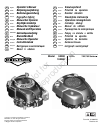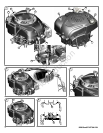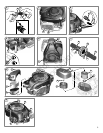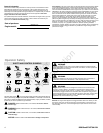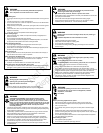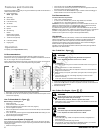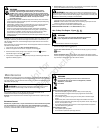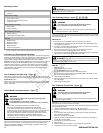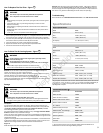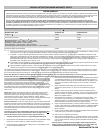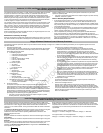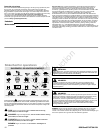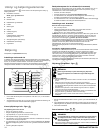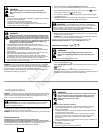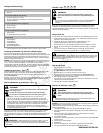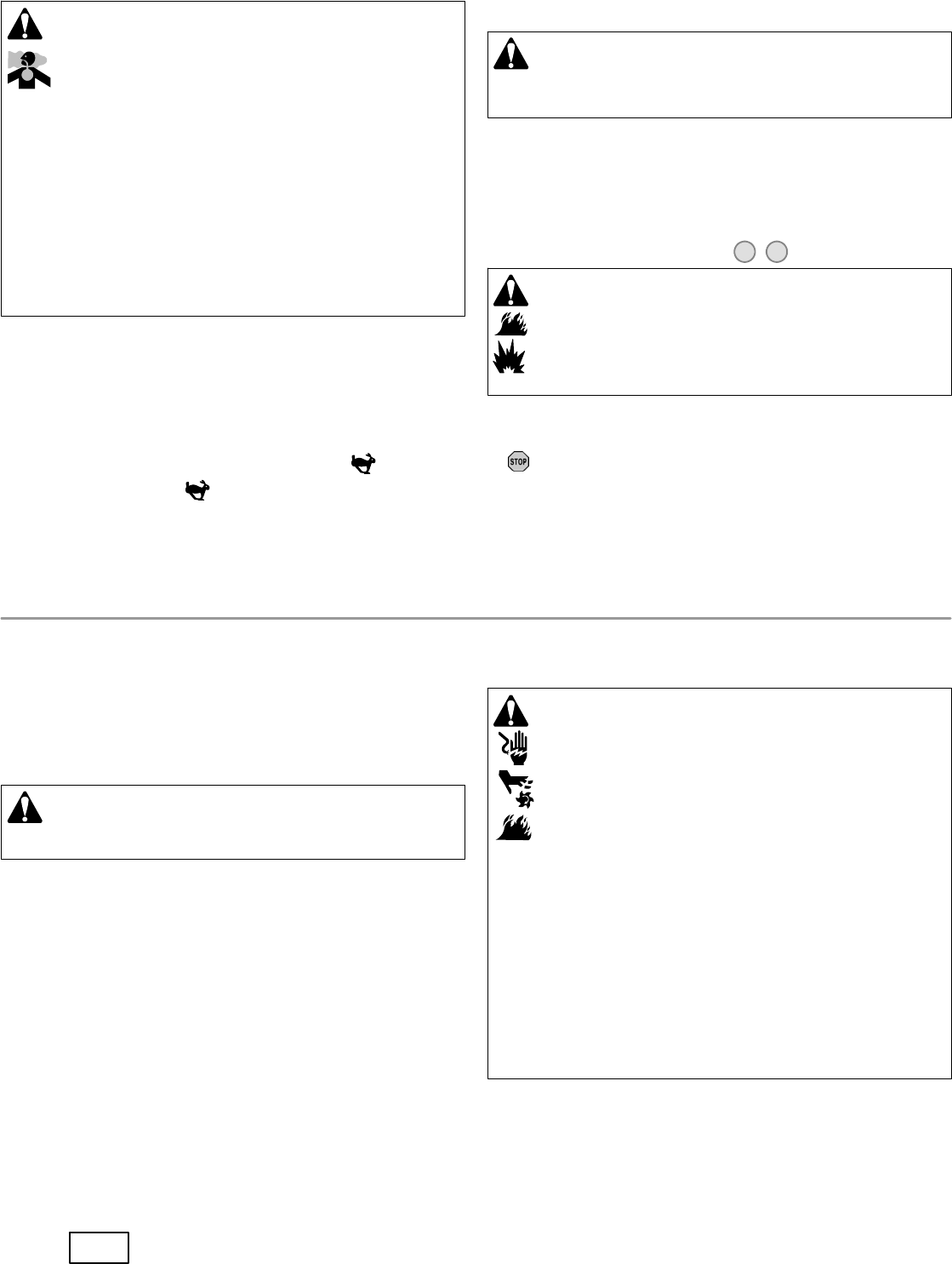
7
en
POISONOUS GAS HAZARD. Engine exhaust contains carbon
monoxide, a poisonous gas that could kill you in minutes. You
CANNOT see it, smell it, or taste it. Even if you do not smell exhaust
fumes, you could still be exposed to carbon monoxide gas. If you start
to feel sick, dizzy, or weak while using this product, shut it off and get
to fresh air RIGHT AWAY. See a doctor. You may have carbon
monoxide poisoning.
WARNING
Operate this product ONLY outside far away from windows, doors and vents to
reduce the risk of carbon monoxide gas from accumulating and potentially being
drawn towards occupied spaces.
Install battery--operated carbon monoxide alarms or plug--in carbon monoxide
alarms with battery back-up according to the manufacturer’s instructions.
Smoke alarms cannot detect carbon monoxide gas.
DO NOT run this product inside homes, garages, basements, crawlspaces,
sheds, or other partially-enclosed spaces even if using f ans or opening doors
and windows for ventilation. Carbon monoxide can quickly build up in these
spaces and can linger for hours, even after this product has shut off.
ALWAYS place this product downwind and point the engine exhaust away from
occupied spaces.
NOTICE: This engine was shipped from Briggs & Stratton without oil. Before you start
the engine, make sure you add oil according to the instructions in this manual. If you
start the engine without oil, it will be damaged beyond repair and will not be covered
under warranty.
Note: Equipment may have remote controls. See the equipment manual for location and
operation of remote controls.
1. Check the oil level. See the How To Check/Add Oil section.
2. Make sure equipment drive controls, if equipped, are disengaged.
3. Move the throttle control (A, Figure 4), if equipped, to the fast
position.
Operate the engine in the fast
position.
4. If the product is equipped with an engine stop lever (C), hold the engine stop lever
against the handle (Figure 5).
5. Rewind Start: Firmly hold the starter cord handle (D). Pull the starter cord handle
slowly until resistance is felt, then pull rapidly (Figure 4).
WARNING: Rapid retraction of the starter cord (kickback) will pull your
hand and arm toward the engine faster than you can let go. Broken bones, fractures,
bruises or sprains could result. When starting engine, pull the starter cord slowly until
resistance is felt and then pull rapidly to avoid kickback.
6. Electric Start: Turn the electric start switch to the on/start position. See the
equipment manual for the location and operation of the switch.
NOTICE: To extend the life of the starter, use short starting cycles (five seconds
maximum). Wait one minute between starting cycles.
Note: If the engine does not start after repeated attempts, go to
BRIGGSandSTRATTON.COM or call 1-800-233-3723 (in USA).
How To Stop The Engine - Figure
4 5
WARNING
Fuel and its vapors are extremely flammable and explosive.
Fire or explosion can cause severe burns or death.
Do not choke the carburetor to stop engine.
1. Release the engine stop lever (E, Figure 5)
or
Engine with Throttle Control: Move the throttle c ontrol (A, Figure 4) to the stop
position
or
Engine with Electric Start: Turn the electric s tart switch to the off/stop position.
See the equipment manual for the location and operation of the switch. Remove the
key and keep in a safe place out of the reach of children.
Maintenance
NOTICE: If the engine is tipped during maintenance, the fuel tank must be empty and
thesparkplugsidemust be up. If the fuel tank is not empty and if the engine is tipped in
any other direction, it may be difficult to start due to oil or gasoline contaminating the air
filter and/or the spark plug.
WARNING: When performing maintenance that requires the unit to be
tipped, the fuel tank must be empty or f uel can leak out and result in a fire or
explosion.
We recommend that you see any Briggs & Stratton Authorized Dealer for all
maintenance and service of the engine and engine parts.
NOTICE: All the components used t o build this engine must remain in place for proper
operation.
Emissions Control
Maintenance, replacement, or repair of the emissions control devices and systems
may be performed by any non-road engine repair establishment or individual.
However, to obtain “no charge” emissions control service, the work must be performed
by a factory authorized dealer. See the Emissions Warranty.
Unintentional sparking can result in fire or electric shock.
Unintentional start-up can result in entanglement, traumatic
amputation, or laceration.
Fire hazard
WARNING
Before performing adjustments or repairs:
Disconnect the spark plug wire and keep it away from the s park plug.
Disconnect battery at negative terminal (only engines with electric start.)
Use only correct tools.
Do not tamper with governor spring, links or other parts to increase engine
speed.
Replacement parts must be of the same design and installed in the same
position as the original parts. Other parts may not perform as well, may damage
the unit, and may result in injury.
Do not strike the flywheel with a hammer or hard object because the flywheel
may later shatter during operation.
When testing for spark:
Use approved spark plug tester.
Do not check for spark w ith spark plug removed.
Not for
Reproduction



